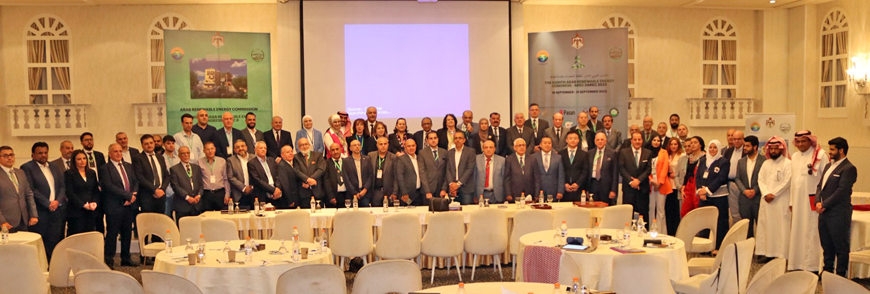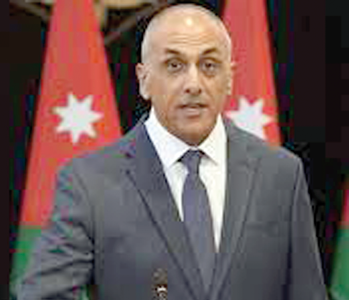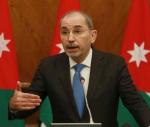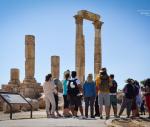You are here
Dodging pitfalls necessary along Jordan’s low emission pathway
By Jessi Amason - Nov 26,2022 - Last updated at Nov 26,2022
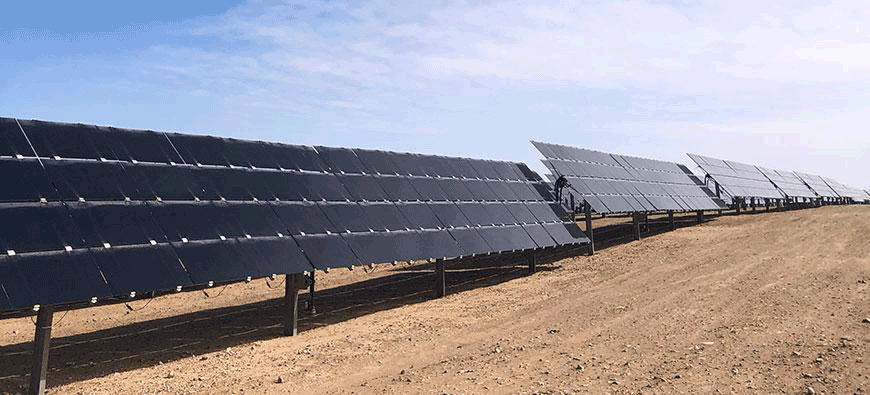
A view of a solar plant in the Maan Governorate, some 220km south of Amman (File photo)
AMMAN — As a prominent energy-importer, Jordan is hastening its transition towards renewable energy, joining the global decarbonisation movement and striving to achieve a 50 per cent renewable energy balance by 2030.
Jordan currently imports approximately 84 per cent of its energy needs, according to the Ministry of Energy and Mineral Resources.Positioned at a critical nexus of a refugee-induced population boom, one of the world’s most severe water shortages, and a shortage of fossil fuel reserves, the Kingdom is pursuing an aggressive energy security strategy that is heavily reliant upon increasing the quotient of renewables in the country’s energy mix.
His Majesty King Abdullah at the COP27 climate conference in Sharm El Sheikh, Egypt, announced that the country is currently meeting 29 per cent of its energy needs from renewable sources. This figure, up from 20 per cent in 2020, has been lauded by stakeholders as an indication of positive progress along the country’s formidable 2020-2030 National Energy Strategy. However, industry representatives note that intersecting obstacles, such as the country’s already overburdened grid, infrastructural shortcomings and prior fossil fuel commitments must be surmounted for the country to maintain its current momentum.
In its race to the 2030 renewable energy goals, Jordan’s transition has been a “success story” compared to global developments in the field, according to Secretary-General of the Ministry of Energy and Mineral Resources Amani Al Azzam.
The installed generating capacity of renewable energy sources reached 2526 megawatts at the end of July 2021, contributing about 29 per cent of the electric power generated since the beginning of this year. In 2014, this figure measured only 1 per cent, Azzam told The Jordan Times.
The secretary-general also noted that the recently published Arab Future Energy Index AFEX report for 2022 showed Jordan leads the region in the percentage of installed capacity of renewable energy sources, excluding hydropower.
As for University of Jordan professor and EDAMA (“sustainability” in Arabic) association co-founder Ahmad Al Salaymeh, Jordan is well on its way to achieving the 50 per cent renewables by 2030 goal announced by Minister of Energy and Mineral Resources Saleh Al Kharabsheh in November 2021.
Speaking with The Jordan Times, Salaymeh identified wind and photovoltaic (PV) solar power as Jordan’s most promising renewable energy sources, both of which are plentifully available in the country.
He explained that recent meteorological data indicates that Jordan — and the Maan area in particular — has the highest solar intensity in the entire region, estimated to be at least 10 per cent higher than previous satellite estimates. These findings indicate “high potential” for harnessing solar power in Jordan, the scholar said.
Across the field, stakeholders cite the capacity and stability of Jordan’s electricity grid as an uphill battle for the sector.
According to Azzam, challenges such as variability in net load and power quality fluctuations can cause grid instability.
“The net load during the day is much lower than at night, which causes great challenges for system operators,” he said.
As for quality variability, “the intermittent nature of solar and wind generation causes voltage fluctuations in the electrical system, which affects the stability of the electrical grid”, he added.
In addition to grid stability, capacity is another concern for sector stakeholders, said German-Jordanian University associate professor and renewable energy engineer Aiman Al Batayneh.
“It is hard for most of Jordanian sectors — residential, commercial and industrial — to install renewable energy systems, and in particular PV systems due to… technical challenges due to the grid capacity,” Batayneh told The Jordan Times.
A digital revamping of the energy sector and the incorporation of smart grids constitute a potential solution to the issue, which the secretary-general referenced as a governmental work-in-progress.
According to the International Energy Agency, smart grids are electricity networks which implement digital technologies to monitor and manage the transport of electricity in order to meet the varying electricity demands of users.
“Smart meters”, a main feature of smart grids, would allow for the application of variable tariffs — Salaymeh’s suggestion for lightening the National Electric Power Company’s (NEPCO) infrastructural burden during peak energy times.
Variable tariffs based on usage are a promising method of shifting consumer behaviour, which would allow for an “increase of administration of more renewable energy in our grid”, and a reduction in energy prices as a whole, he explained.
Azzam also mentioned that the ministry is working to implement electrical interconnection projects with neighbouring countries such as Egypt, Saudi Arabia, Iraq and Palestine, which would contribute to grid-stabilising efforts.
Obtaining sustainable energy storage solutions are similarly critical for grid stability, Salaymeh said, noting that the Kingdom’s low energy storage capacity, especially clean energy storage, is a major engineering challenge to the transition.
In concurrence, Secretary-General Azzam named a lack of electric energy storage projects and “the need for reserve capacities to compensate for periods of unexpected non-generation” as key obstacles for Jordan’s integration of renewable energy.
According to the results of a 2020 study co-authored by Salaymeh, hydropower storage could allow for renewable energy penetration of up to 50 per cent.
In the study, Salaymeh and his team found hydropower technology to be the best path forward in terms of energy storage, he said, adding that the method is both clean and cost-efficient.
“The only challenge that we have is the availability of water,” he said, adding that projects are underway on Jordan’s dams. Wadi Mujib, located around 83 kilometres south of the capital, has shown the most promising results.
Likewise, an energy ministry project to increase the flexibility of the electrical network through electrical storage projects “of all kinds” is underway. Specifically, the ministry’s pursuits in this area include an electricity storage project using dam water in the Wadi Mujib region and advancing battery storage, Azzam said.
According to Jordanian climate change and energy expert Ali Nasrallah, more must be done to fortify and expand the grid.
“Jordan has hit a dead-end with showing how much renewable energy the grid can withstand, with not enough projects or strategic planning to increase the grid capacity or upgrade it with smart grid technologies or utility-scale battery storage to allow for more renewable energy integration,” he said. “This comes from both poor planning, and over-contracting of fossil fuel”.
Offering an economic perspective, economist and energy affairs specialist Amer Shobaki told The Jordan Times that the biggest challenge facing the transition “is the government's dependence on taxes on oil derivatives, which constitute 28 per cent of the tax revenues for the Treasury”.
Shobaki added that the present import-heavy status of the energy mix and its subsequent bill “puts pressure” on the government, costing the Treasury “nearly $5 billion from Central Bank reserves each year”.
Old, prior fossil fuel projects “burden the government in terms of price, contract term and difficult conditions”, the economist said.
According to the National Energy Strategy 2020-2030, the Kingdom’s efforts in fossil fuel utilisation come in a bid to “increase energy security”. Projects include the foundation of the government-owned Jordan Oil Terminals Company in 2015, an oil storage and logistics operation, licensing three companies to market oil products and permitting private sector gasoline and diesel imports. Jordan is also actively promoting investments in oil shale extraction, and also launched an expansion of the Jordan Petroleum Refinery Company — scheduled to be completed in 2023.
Salaymeh’s co-authored 2020 study also found that “within the transformation process, fossil fuel contracts pose a challenge, as they may hamper renewable energy expansion and increase integration cost”, though Salaymeh currently expresses more optimism in this respect than at the time of the study’s publication.
According to Secretary-General Azzam, the government is striving to increase reliance on local renewable energy sources to help alleviate this financial burden on the state budget and to help mitigate its impact on economic competitiveness.
With an average energy demand growth rate of 3.3 per cent annually compounded by other domestic challenges, “Jordan’s future energy landscape is at a hinge point,” Nasrallah said. However, the climate expert remains confident in Jordan’s potential to “achieve great strides in renewable energy adoption and decarbonisation”, noting the positive ripple effect that an enhanced renewables landscape can have on unemployment and economic growth.
For Shobaki, sincere follow-through on clean energy projects must be the principal issue for stakeholders.
“Implementation is more important than theorising, more than promises and plans. I hope to implement first what is urgently needed, and quickly, because time is not in the interest of Jordan's people and government,” he said.
Related Articles
AMMAN — HRH Princess Sana Asem on Tuesday attended the opening of the Eighth Arab Forum for Renewable Energy and Energy Efficiency.The three
AMMAN — Though Jordan’s energy sector strategy, announced in 2020, set a goal to raise the percentage of renewable energy contribution to el
AMMAN — Muawieh Radaideh, the Minister of Environment and Acting Minister of Energy and Mineral Resources, on Thursday highlighted Jordan's


